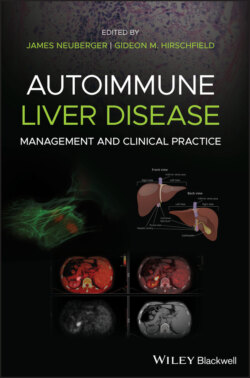Читать книгу Autoimmune Liver Disease - Группа авторов - Страница 19
Bilirubin Metabolism and Transport
ОглавлениеBilirubin is an end‐product of heme catabolism. Two enzymes are involved in bilirubin formation: the microsomal heme oxygenase converts heme to biliverdin and a cytosolic reductase subsequently reduces biliverdin to bilirubin.
The majority (up to 85%) of heme is derived from hemoglobin and only a small fraction from other heme‐containing proteins such as cytochrome P450, myoglobin and immature bone marrow cells. Bilirubin formed in the monocytic–macrophage cell system of liver, spleen and bone marrow and some of the bilirubin formed in the hepatocytes from hepatic heme are released into plasma where bilirubin is bound to albumin at high‐affinity binding sites. In normal conditions, only a minimal amount of bilirubin is unbound in plasma. An increase in free bilirubin would allow the pigment to enter tissues where it can have toxic effects; this is what is observed in neonates with defective conjugation and in Crigler–Najjar syndrome, when diffusion of unbound bilirubin into the brain can cause kernicterus.
In normal conditions, bilirubin is efficiently taken up by the liver whereas the albumin remains in plasma. In the liver, bilirubin is bound initially to glutathione‐S‐transferase, then glucuronidated and excreted into bile. Microsomal bilirubin uridine diphosphate glucuronosyltransferase (UGT) is the enzyme that converts unconjugated bilirubin to conjugated bilirubin monoglucuronide and diglucuronide. Biliary excretion of the glucuronide is mediated by the adenosine triphosphate (ATP)‐dependent multidrug resistance protein (MRP)‐2 and this is the rate‐limiting factor in the transport of bilirubin from plasma to bile. Bilirubin diglucuronide is not reabsorbed from the small intestine; in the colon it may be hydrolyzed by bacterial β‐glucuronidases, producing urobilinogens and urobilin, which are excreted in the stool or urine.
